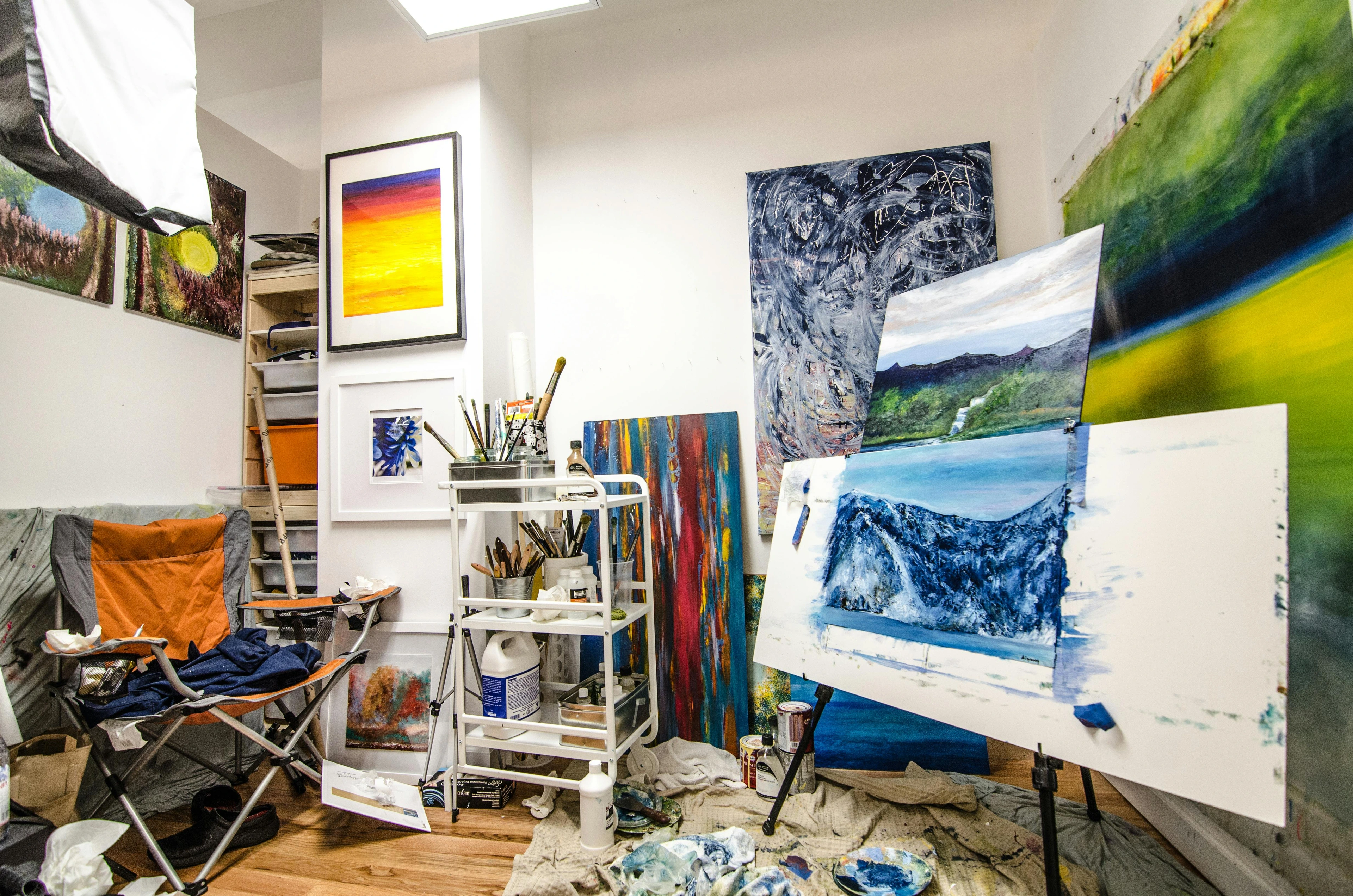
Art as an Investment: An Artist's Candid Take on Risks, Rewards & Passion
As an artist, I offer a candid, personal take on art as an investment. We'll explore the unique rewards (like that 'psychic dividend'!) and the sometimes-stressful risks, sharing anecdotes and insights from my side of the easel.
Okay, let's talk about something that feels a little... strange, even for me as an artist. We're diving into the world where the passion and soul I pour into my work somehow intersect with spreadsheets, market trends, and the cold, hard concept of 'investment.' Viewing art as an investment class is navigating this truly unique landscape where, yes, passion meets potential profit, but also where things get wonderfully, sometimes frustratingly, subjective. Unlike something straightforward like stocks or bonds, art offers this incredible aesthetic return alongside the possibility of financial appreciation. But, oh boy, does it come with its own distinct set of risks and considerations. It's a balancing act, for sure.
The Rewards of Inviting Art Into Your Life (and Portfolio)
So, why do people invest in art? Is it just about the money? From my perspective, it's rarely just about the money, and that's a good thing. Here's why:
- Potential for High Returns: Look, I'm not going to pretend it doesn't happen. Certain artworks, especially by sought-after artists (sometimes even top artists ever or top living artists today!), can see significant value appreciation over time. Sometimes, it genuinely outpaces traditional investments. The art market, particularly at the high end, has shown a surprising resilience, which, honestly, can feel a bit surreal from the studio. It's like, 'Wow, someone really values that canvas that much?'
- Aesthetic Pleasure & Emotional Return: This, for me, is the real reward. Unlike a number in a brokerage account, you get to live with your art investment every single day. It's a constant source of inspiration, conversation, or just quiet contemplation. This "psychic dividend" is a massive appeal. Seeing art in person, whether it's hanging in your home, discovered in galleries (maybe even finding some gems in best galleries for emerging artists), or visiting museums like our own in 's-Hertogenbosch, provides a unique kind of enrichment that no stock certificate ever will. I mean, imagine waking up to a piece that just speaks to you. That's priceless, even if the market says it's worth a fortune. And honestly, there's a deep emotional satisfaction in supporting an artist whose work you believe in, knowing your purchase helps them keep creating. That connection is a reward all its own.
- Portfolio Diversification: Financial advisors love this one, and they're not wrong. Art often has a low correlation with traditional financial markets (stocks, bonds). Adding art investments can potentially smooth out the bumps in your overall portfolio volatility. It's like having a different kind of engine in your investment car.
- Tangible Asset: It's a physical object you own directly. You can touch it (carefully!), hang it, move it. In a world of digital assets, there's something grounding about that.
- Cultural & Social Value: Owning art can open doors, provide social status (if you care about that sort of thing), offer entry into cultural circles, and give you the potential to leave a beautiful legacy. Plus, there's the quiet satisfaction of supporting the arts and, perhaps, a living artist like myself! That feels good, right? And let's not forget the community! Art collecting can connect you with other enthusiasts, gallerists, and even artists, building relationships around a shared passion. It's a surprisingly social world, if you choose to engage with it.
The Risks: Where Things Get... Interesting (and Sometimes Stressful)
Alright, let's balance the scales. Art investment is definitely not a walk in the park. It comes with significant challenges that, frankly, can make even an artist scratch their head sometimes. So, what are the potential pitfalls you should be aware of?
- Illiquidity: Selling art isn't like clicking a button to sell a stock. It can take time. Finding the right buyer at the right price isn't guaranteed, making it much less liquid than stocks. The process often involves navigating the secondary art market, which is a whole other beast. It's a commitment, not a quick flip. From my side, seeing a piece I poured my heart into sit unsold for a long time can be... well, let's just say it's a lesson in patience. And sometimes, when a piece does sell quickly, you wonder if you priced it too low! It's a constant dance.
- High Transaction Costs: Oh, the costs! Buying and selling art involves substantial fees: gallery commissions, auction house premiums (both buyer's and seller's, which can really add up), insurance, storage, framing, conservation, and potentially shipping. These significantly impact your net returns. Understanding how much original art costs goes way beyond the price tag on the wall. And don't forget the ongoing costs of proper art care and conservation – that's a real, necessary expense to protect your investment. Think about light damage, humidity, even just dust – a conservator's bill can be hefty, but essential to maintain value. It's enough to make you want to just give the art away... almost!
- Subjectivity & Valuation Difficulty: This is where it gets truly fascinating, and sometimes, yes, a little weird. Art valuation is incredibly complex and subjective. It's influenced by trends, artist reputation, provenance, condition, and expert opinion. Transparency can be limited compared to financial markets. Understanding art prices requires considering so many factors, and even then, it's not an exact science. Sometimes I look at the market and think, "Well, who saw that coming?" It can feel strange to have my own creative output assigned a fluctuating monetary value based on external forces, often completely disconnected from the hours, emotion, or meaning I put into it. I remember one piece I was sure would be a quick seller – it had all the elements people seemed to like at the time. It sat. Meanwhile, a quiet, more experimental piece unexpectedly caught the eye of a major collector and its value jumped. Go figure. It's a humbling, sometimes baffling, aspect of this world.
- Market Volatility & Changing Tastes: The art market can be volatile. Tastes change, and an artist popular today might, sadly, fall out of favour tomorrow. Economic downturns can also impact prices. It's a dynamic ecosystem, and predicting its movements is... well, let's just say it keeps things interesting. I've seen artists whose work was flying off the walls suddenly struggle as trends shifted. It's a stark reminder that the market isn't always about inherent artistic merit; sometimes, it's just... what's 'in' right now. That can be a tough pill to swallow, both as an artist and an investor.
- Damage, Theft, and Forgery: As a physical asset, art is vulnerable. Damage, theft, and the risk of forgery or authenticity issues are real concerns. This absolutely necessitates insurance and diligent proper art care. You're not just buying a painting; you're taking on the responsibility of its well-being. And the thought of a forgery? It's not just about the money; it's an insult to the artist's legacy and the integrity of the market. Provenance, the documented history of ownership, is absolutely crucial here – it's your best defense against fakes and ensures you legally own the piece. It's the unglamorous paperwork that protects the beautiful object.
- Need for Expertise: Successful art investing typically requires significant knowledge, research, or reliance on trusted advisors. Identifying emerging artists with potential requires a keen eye and understanding of the market – it's a continuous learning curve, even for those of us deeply immersed in the art world. The sheer volume of research needed can be daunting, but it's part of the journey. Learning how to read a painting can deepen both your appreciation and your analytical skills. I remember early on, trying to understand auction results felt like deciphering a foreign language. It took time, asking questions, and making a few missteps to even grasp the basics of market data. It really hammered home why having knowledgeable guides is so important.
Navigating the Art Market Segments: A Personal View
The art market isn't just one big thing; it's a collection of different segments, each with its own vibe and risk/reward profile. As an artist, I see these segments from a slightly different angle:
- Blue-Chip Art: These are the big names, the historically significant, globally recognized artists (top artists ever like Picasso, Warhol, Rembrandt) with solid auction records and museum presence. Think of them as the established giants.
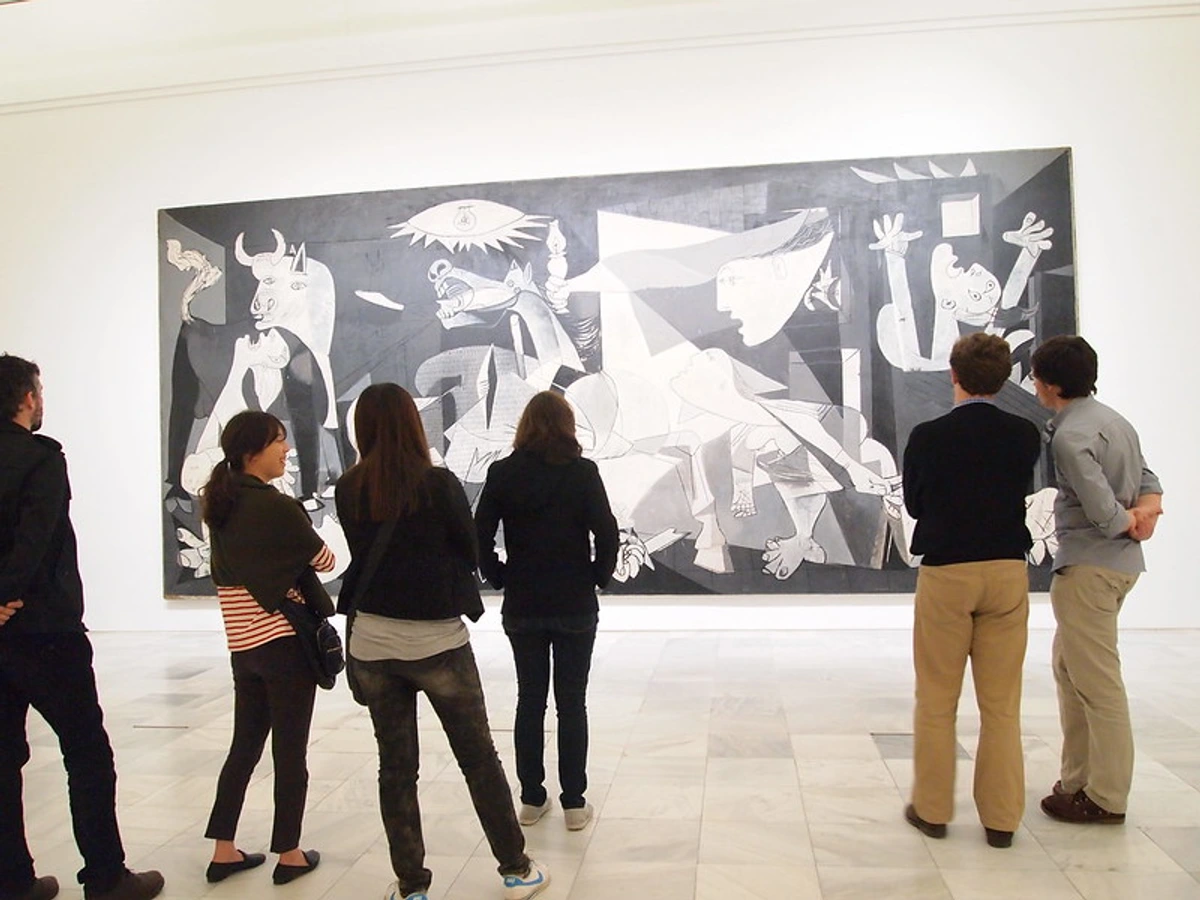
- Rewards: Generally considered the safest segment, they tend to hold value relatively well, and there's undeniable prestige in owning a masterpiece. From my side, these are the artists whose legacies feel almost untouchable, the ones we study and revere.
- Risks: The entry prices are astronomical (often millions), and while they appreciate, the percentage growth might be lower than in other segments. They're also not entirely immune to market downturns. And honestly, the sheer scale of money at this level can feel a bit abstract from the studio floor.
- Established / Mid-Career Artists: These are artists with a significant exhibition history, represented by reputable galleries, critical recognition, and consistent sales. They're not yet the household names of blue-chip, but they're definitely on the map. This includes many top living artists today.
- Rewards: There's exciting potential for appreciation as their career progresses towards that blue-chip status. The price points are more accessible than blue-chip (though still substantial). As an artist, this is a stage many aspire to – it represents sustained recognition and a solid foundation.
- Risks: An artist's reputation can still fluctuate, and market demand might plateau. It requires belief in the artist's long-term trajectory. It's a segment where the influence of art critics, curators, and major institutions (do museums buy art?) becomes increasingly significant in shaping careers and market perception.
- Emerging Artists: These are artists early in their careers, perhaps recent graduates or just starting to gain gallery representation and critical notice. This is the space I often find myself in, and it's full of energy!
- Rewards: This is where the highest potential for significant value appreciation lies if the artist gains wider recognition. The entry prices are lower, and there's the pure excitement of discovering and supporting talent early on. You can learn how to spot and buy art from emerging artists – it's a thrilling hunt! Starting an art collection on a budget often begins right here. And for the artist, that early support is absolutely invaluable – it's fuel for the creative fire.
- Risks: This is also the highest risk segment. Many emerging artists, sadly, do not achieve sustained success. The market here is more speculative, and it requires a truly keen eye, deep insight, and a lot of research. It's a leap of faith, but a rewarding one when it pays off. It's a segment where personal connection with the artist or their vision can feel most direct, but the market's unpredictability is also most acute.
- Prints and Editions: Limited edition works (prints, photographs, sculptures) produced in multiples, authorized by the artist. This is a fantastic entry point for many collectors.
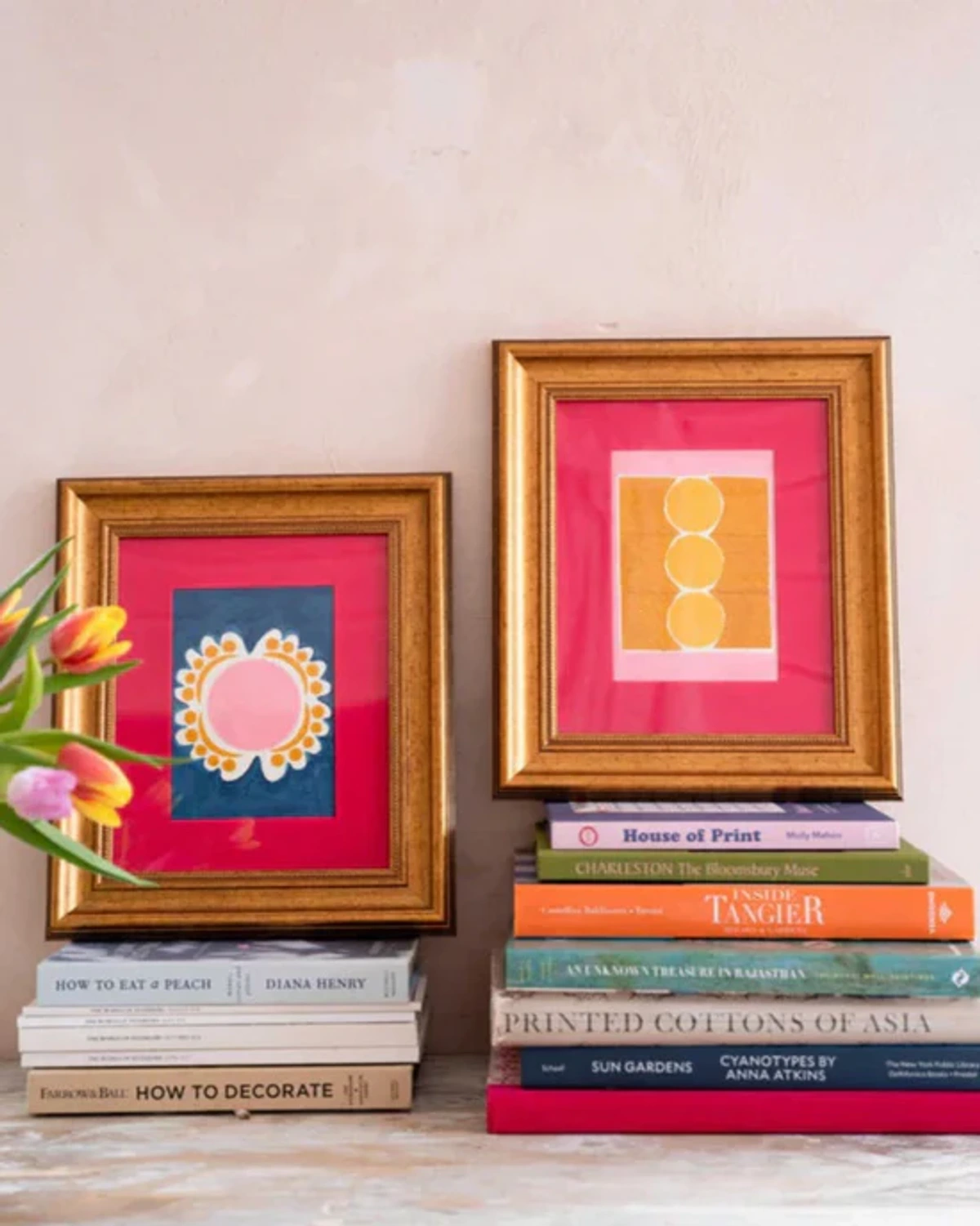
- Rewards: More accessible price points for works by well-known artists. They can appreciate significantly, especially rare or early editions. It offers a different consideration in the prints vs. paintings debate for collectors. It's a way to own a piece of an artist's vision without needing a blue-chip budget.
- Risks: Value is heavily dependent on the artist's overall market, edition size (smaller is usually better), condition, signature, and provenance. Mass-produced or open editions typically have little to no investment potential. You need to understand what makes a print valuable. Are Art Prints a Good Investment? My Personal Take delves into this more.
Common Art Investment Strategies (But Remember, Passion First!)
While financial approaches exist, I'll always tell you that passion should guide your acquisition first (seriously, read how to buy art you love). But if you're also thinking about the investment side, here are some common strategies, viewed through the lens of balancing love and potential value:
- Buy and Hold: This is the most common strategy, and it aligns beautifully with buying for passion. You acquire quality works with good provenance and hold them for the long term (10+ years), anticipating gradual appreciation. It's suitable for blue-chip and established artists, and it's the most sensible approach if you genuinely love the piece. If you buy something you adore, holding it for decades feels natural, not like a chore.
- Artist Trajectory Investing: This is about focusing on identifying emerging or mid-career artists you believe are undervalued and poised for greater recognition. This requires deep market knowledge, building relationships with galleries, and doing thorough artist research. It's high risk, high potential reward, and it's exciting to be part of an artist's journey. This strategy feels closest to supporting the creative process directly, but it demands significant homework and a tolerance for uncertainty.
- Niche Focus: Specializing in a particular genre, period, medium, or region (e.g., 17th-century Dutch masters, contemporary photography, Latin American modern art). This allows you to develop deep expertise, but it does carry concentration risk if that niche falls out of favor. It's a way to become a true connoisseur, but make sure your passion for the niche is as strong as the potential investment angle.
- Arbitrage (Less Common/Difficult): Trying to exploit price differences for the same or similar works between different markets (e.g., gallery vs. auction, different geographic regions). This requires speed, capital, and significant expertise. Honestly, it's often impractical due to those pesky transaction costs and illiquidity. Probably not one for the beginner, and definitely feels like a purely financial game, far removed from the art itself.
- 'Flipping': Buying art with the intention of reselling it quickly for a profit. As an artist who puts my heart into my work, this strategy feels... well, let's just say it's generally discouraged for inexperienced investors. High transaction costs, illiquidity, and the difficulty of consistently predicting short-term market movements make it tricky. It's more common in speculative bubbles, and frankly, it misses the point of connecting with art. It's the opposite of buying for love, and the market often punishes those who treat art purely as a commodity.
Key Considerations for Anyone Thinking About Art Investment
If you're serious about this, here are some things I think about, both as an artist and someone who observes the market. These are the practical, sometimes unglamorous, realities:
- Long-Term Horizon: Art is almost always a long-term investment (often 10+ years). Don't expect quick returns. Patience is key. Your piece needs time to breathe, for the artist's career to develop, or for market trends to shift. It's a marathon, not a sprint.
- Passion First: I cannot stress this enough. Buy what you love first. The potential appreciation should be a secondary benefit. This helps you define your personal art style and taste and ensures you'll enjoy the piece even if the market doesn't perform as hoped. It's my core advice because it makes the whole experience richer and more resilient to market dips. If the market value drops, you still have a piece that brings you joy. That's a return you can always count on.
- Due Diligence: Do your homework! Thoroughly research the artist, the artwork's provenance (ownership history), condition, and price history. Think of this research not just as a financial necessity, but as a way to build a deeper relationship with the artwork and the artist's story. It makes the "homework" feel less like a chore and more like part of the collecting journey. And don't forget the paperwork! Proper documentation – receipts, certificates of authenticity, condition reports – is essential. It feels very un-art-like, I know, but it's crucial for verifying authenticity, legal ownership, and protecting your investment down the line.
- How to Research: Utilize auction databases (e.g., Artnet, Artprice), check artist exhibition history and presence in museum collections, consult catalogues raisonnés if available, demand detailed condition reports, verify authenticity documentation, and understand comparable sales data. Researching artists before buying is non-negotiable. And don't be afraid to ask the 10 essential questions before buying!
- Diversify (Within Art): If you're investing significantly, consider diversifying across different artists, styles, mediums, or market segments (e.g., mix established and emerging). Don't put all your eggs in one basket. Just like a financial portfolio, spreading your risk within the art world is a smart move.
- Budget Management: Only invest what you can afford to lose or have tied up for potentially long periods. Account for all associated costs (purchase price, premiums, insurance, storage, framing, potential conservation). See our guide on starting an art collection on a budget – it's definitely possible to start small and build over time. Don't let the glamour of the high-end market blind you to the fact that collecting can begin modestly.
- Seek Professional Advice: Consider consulting reputable art advisors, established galleries (like those found in major art cities such as New York or London), or certified appraisers. Finding people you trust, who understand your taste and goals, is invaluable. Just be aware of potential conflicts of interest. A good advisor can be worth their weight in gold, helping you navigate the complexities I mentioned earlier.
- Tax and Legal Aspects: Be aware that buying, owning, and selling art can have significant tax implications (e.g., sales tax, VAT, capital gains tax, inheritance/estate tax, potential wealth tax) that vary greatly by jurisdiction. Import/export regulations may also apply. Always consult with qualified legal and tax professionals in your specific location for advice tailored to your situation. This information is not financial or legal advice – seriously, talk to an expert! Why is it so complex? Because art is often classified differently than standard financial assets, sometimes as a 'collectible,' which can have different capital gains rates. Plus, international transactions add layers of customs and tax rules. It's definitely not a DIY area.
- Ethical Considerations: Responsible investors consider the ethical dimensions of their acquisitions, including clear provenance (avoiding looted or illegally exported art), fair treatment of artists, and the potential impact on cultural heritage. There's also the ethical reward of directly supporting living artists, helping them continue their creative work. That's a return that doesn't show up on a balance sheet but feels pretty good.
The Role of Technology in Art Investment: A Mixed Bag
Technology is definitely shaking things up in the art market, and from my side of the easel, it's a mixed bag:
- Online Sales Platforms: Websites ranging from established gallery portals to online-only marketplaces (where to buy art online) have increased accessibility and transparency. They allow buyers to discover and acquire art globally, which is fantastic for artists and collectors alike. It provides so many more options on where to buy art.
- Data Accessibility: Online databases provide easier access to auction records and artist information, aiding due diligence and valuation analysis. This is a huge step forward, though interpreting the data still requires expertise.
- Fractional Ownership: Platforms are emerging that allow investors to buy shares or tokens representing ownership in high-value artworks, lowering the entry barrier for blue-chip art. It's an interesting, relatively new model with its own set of risks and regulatory uncertainties. The idea of owning a tiny piece of a masterpiece is cool, but it's not the same as having it on your wall. You own a share of the asset, not the physical object itself, which fundamentally changes the nature of the 'ownership' experience.
- Digital Art and NFTs: Ah, NFTs. The rise of blockchain technology has enabled the creation and sale of unique digital artworks. While attracting significant attention and investment, the NFT market is, in my humble artist's opinion, highly volatile, speculative, and its long-term position within the broader art investment landscape is still evolving. Treat with extreme caution. It feels a bit like the Wild West out there sometimes.
Alternative Ways to Engage with Art (Beyond Direct Ownership)
Beyond buying a piece outright, other avenues exist if you're interested in the intersection of art and finance:
- Art Funds: Pooled investment vehicles managed by professionals who buy and sell art on behalf of investors. They offer diversification and expert management but involve fees, lock-up periods, and manager risk. Minimum investment thresholds can still be high. It's a more hands-off approach, purely financial, and again, you don't get to live with the art.
- Art Lending/Finance: Some investors use high-value art as collateral for loans. Conversely, specialized firms offer loans specifically for art purchases or provide financing secured by existing collections. This involves leverage and associated financial risks – definitely not for the faint of heart.
- Visiting Art Fairs: While not strictly an investment strategy, attending art fairs is a crucial way to understand the market, see a vast amount of art in one place, discover new artists, and connect with galleries. There's an incredible energy at these events, and they are vital hubs for market interaction. I love the buzz of an art fair – seeing so much creativity under one roof, talking to gallerists, and sometimes even meeting collectors. It's a reminder that behind the market numbers are real people making and loving art.
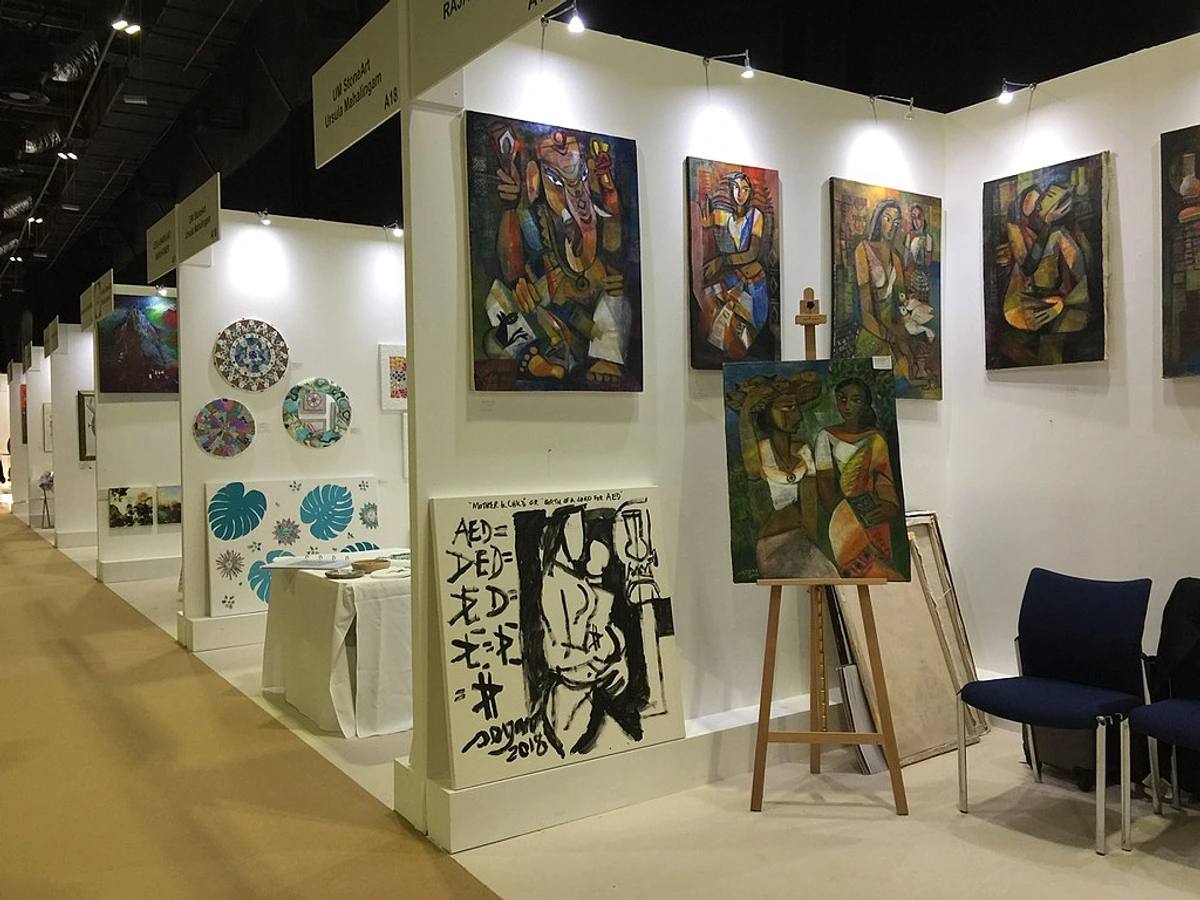
Art Market Performance and Cycles: A Look from the Inside
Understanding market behavior is key, though predicting it is another matter:
- Market Indices: Several indices (e.g., Artprice Global Index, Mei Moses Art Indices) attempt to track the performance of the art market or specific segments. However, they have limitations due to data opacity, the sheer uniqueness of each artwork, and illiquidity. Use them as general indicators, not precise benchmarks like stock market indices. Art isn't a commodity you can easily average.
- Correlation with Economy: While often cited for its low correlation to equities, the art market isn't entirely immune to economic downturns. The high-end (blue-chip) market sometimes shows resilience, while mid-range and emerging segments can be more sensitive. Major recessions tend to impact volume and prices. It's connected, but perhaps on its own quirky timeline.
- Long-Term Trends: Historically, the art market has shown long-term appreciation, particularly for works of high quality and significance. However, past performance is never indicative of future results, and significant fluctuations occur. Investing requires patience – lots of it.
Summary: Risks vs. Rewards (My Take)
Here's how I see the balance:
Feature | Rewards | Risks |
|---|---|---|
| Financial | Potential for high appreciation, diversification benefits, potential inflation hedge, supporting artists | Illiquidity, high transaction costs, valuation challenges, market volatility, requires significant capital for certain segments, ongoing care costs |
| Practical | Tangible asset, aesthetic enjoyment ("psychic dividend"), living with beauty | Requires storage, insurance, conservation (art care); risk of damage, theft, forgery |
| Market | Access to cultural scene, potential legacy, reflects cultural shifts, discovering new talent, community building | Driven by trends & taste, requires expertise/research (artist research), lack of transparency, potential for ethical issues, market unpredictability |
| Commitment | Connection to culture & history, personal enrichment, supporting creativity, emotional satisfaction | Requires long-term outlook, significant research (due diligence), emotional attachment can cloud financial judgment, the responsibility of ownership, emotional stress of market fluctuations |
Frequently Asked Questions (FAQ) - From My Corner of the Studio
Okay, these are questions I hear a lot, sometimes from collectors, sometimes from friends who just don't get this whole 'art world' thing. Let's tackle them, with a bit of my own perspective mixed in.
Q1: Is art a good investment compared to stocks?
A: It's fundamentally different, and honestly, I don't think it's a direct comparison. Art can offer high returns, but it's generally riskier, way less liquid, and has higher transaction costs than stocks. The huge difference? It provides aesthetic pleasure and emotional connection that stocks simply don't. I see it as a portfolio diversifier and a source of personal joy, rather than a direct substitute for traditional assets. Buy art because you love it, and the potential financial return is a wonderful bonus.
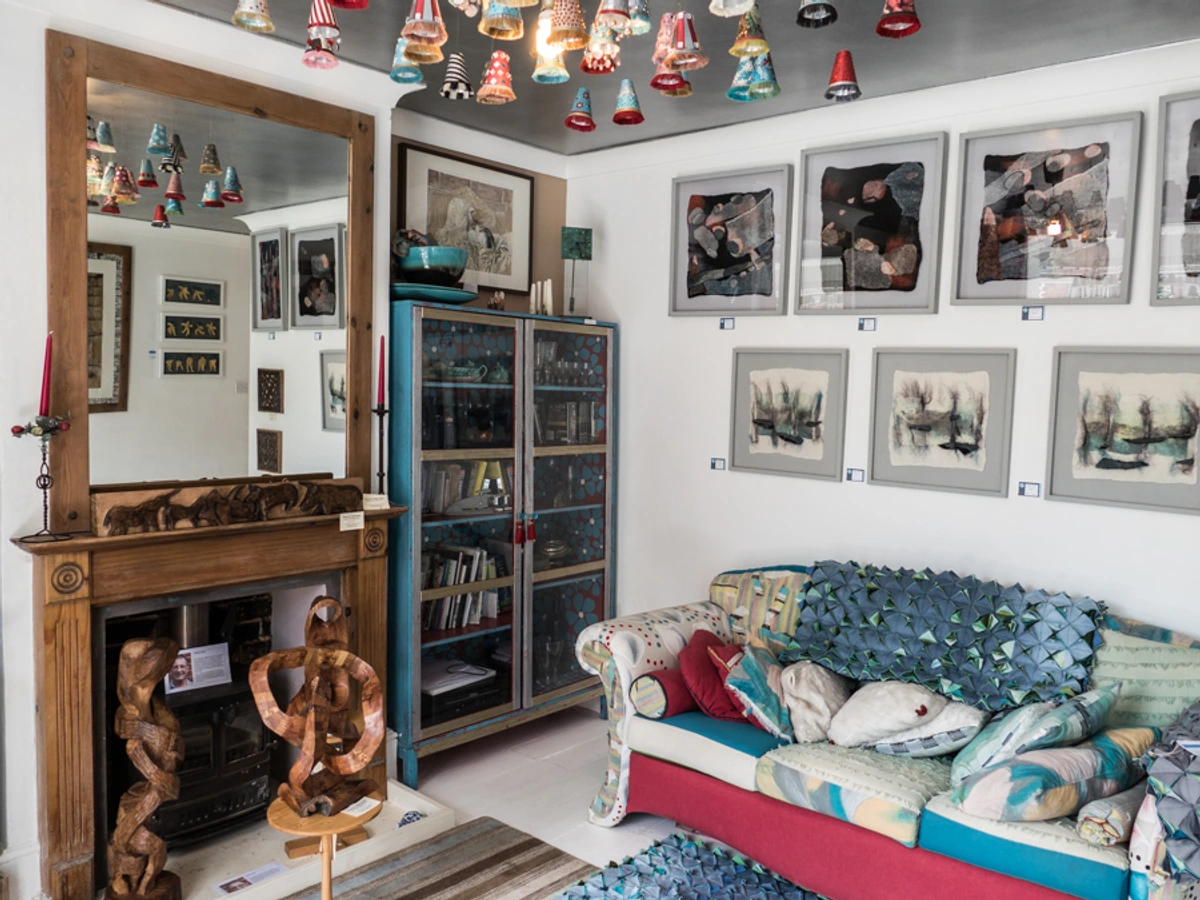
Q2: How much money do I need to start investing in art?
A: This is great news for beginners! Entry points vary widely. You absolutely don't need millions. You can start by buying prints or works by emerging artists for a few hundred or thousand dollars (check out tips for collecting on a budget). High-end, blue-chip art, yes, requires substantial capital (hundreds of thousands to millions). But you can build a meaningful collection over time, piece by piece, focusing on what you love and can afford. Don't feel intimidated by the headlines about record-breaking auction sales; there's a whole vibrant market at more accessible levels.
Q3: How is art valued?
A: Ah, the million-dollar question, sometimes literally! Art valuation is a complex beast. It considers factors like the artist's reputation and exhibition history, the work's condition, provenance (ownership history – super important!), rarity, size, medium, subject matter, and recent sales data for comparable works (auction records, gallery sales). It's a mix of objective data and subjective opinion, detailed further in understanding art prices. It's never just about the materials or the hours I put in; it's about its place in the world, its history, and what the market is willing to pay at a given moment. It's a blend of art history, market dynamics, and sometimes, just plain hype.
Q4: What are the main costs associated with art investment?
A: Beyond the purchase price, you must factor in the extra stuff. Buyer's/seller's premiums at auction (can be 10-25%+ each – ouch!), gallery commissions, insurance (non-negotiable!), potential storage, conservation/framing (framing guide), appraisal fees, and shipping costs. These can add a significant percentage to the total cost, so always ask for a full breakdown. Seriously, those auction premiums can be a shock if you're not expecting them! It's not just the hammer price.
Q5: How can I minimize risk when investing in art?
A: My top advice? Buy what you love first. Then, do your homework – conduct thorough due diligence (research artist, provenance, condition – ask the 10 essential questions before buying). Buy from reputable sources (established galleries, major auction houses, directly from artists you trust). Understand all the costs involved. Insure your art properly. Consider professional advice if you're making significant purchases. And treat it as a long-term hold. Don't buy something you might need to sell next year. It's about being informed, patient, and prioritizing your personal connection to the art.
Q6: What are the main differences between investing in emerging vs. established artists?
A: It's a classic high-risk, high-reward vs. lower-risk, lower-percentage-reward scenario. Investing in emerging artists offers higher potential returns but carries significantly higher risk, lower liquidity, and requires more predictive insight and personal research. Investing in established or blue-chip artists generally involves lower risk and better liquidity but requires much higher capital and offers potentially lower percentage growth. As an artist who started out emerging, I can tell you that support for emerging artists is incredibly impactful, regardless of future market value. It's a direct investment in a creative future.
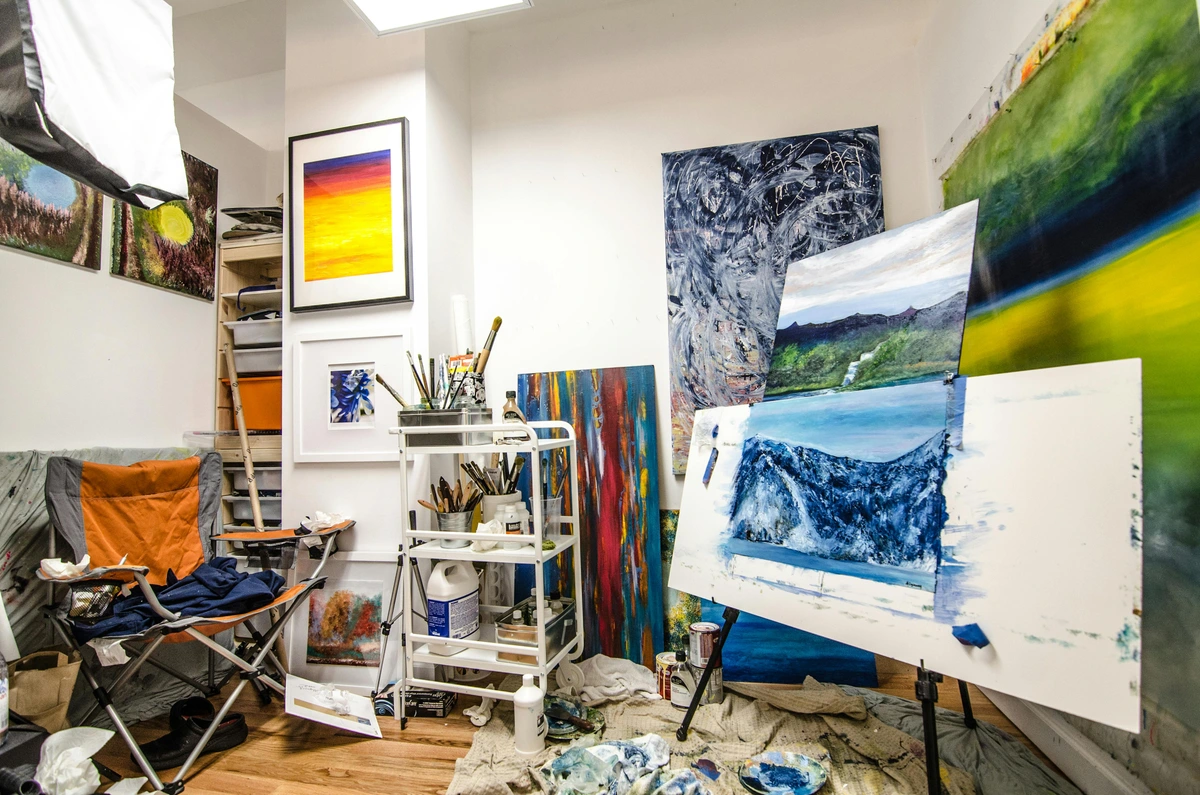
Q7: Are limited edition prints a good investment?
A: They can be! High-quality, limited edition prints by reputable artists can be a good investment and offer a more accessible entry point than unique works. Value depends heavily on the artist's stature, edition size (smaller is usually better), condition, rarity, and provenance. Open editions or posters typically have little to no investment value. Consider the prints vs. paintings factors based on your goals and budget. Are Art Prints a Good Investment? My Personal Take delves into this more.
Q8: What is an Art Fund and how does it work?
A: An Art Fund is a professionally managed investment fund that pools capital from multiple investors to buy and sell a portfolio of artworks. Investors buy shares in the fund. Pros: Diversification, expert management. Cons: Management fees, performance fees, lock-up periods, lack of direct ownership/enjoyment (you don't get to hang it on your wall!), manager risk. It's a purely financial play, less about the personal connection. It's like owning a piece of a stock portfolio that happens to be art, rather than owning a piece of art you love.
Q9: What are the typical tax considerations when selling art?
A: This is complex and varies wildly! Selling art at a profit may trigger capital gains tax. Sales tax or VAT might apply upon purchase or sale. Inheritance or estate taxes could apply. Regulations vary significantly by country and state/region. Always consult a qualified tax advisor in your jurisdiction for specific advice. Seriously, don't guess on this one. The rules around collectibles versus standard capital assets can be different, and state or even city-level taxes can add complexity. It's a maze best navigated with professional help.
Q10: How has technology changed art investing?
A: Technology has increased accessibility through online sales platforms and databases for research, which is great for connecting artists and buyers globally. It has introduced new models like fractional ownership and new asset types like digital art/NFTs (though, as I mentioned, the latter are highly speculative and, frankly, a bit baffling sometimes). It generally increases market transparency but absolutely doesn't eliminate the need for expertise and due diligence. It's a tool, not a magic bullet. It's made the market feel both smaller (global reach) and bigger (more data, more options) at the same time.
Conclusion: It's More Than Just a Number
So, art as an investment... it's a fascinating space, isn't it? From my side, creating the art, it's about expression, connection, and bringing something new into the world. For you, the collector, it can be about that too, alongside the potential for financial gain. It offers unique rewards, including that undeniable pleasure of ownership and the quiet satisfaction of supporting creativity. But it's crucial to understand and weigh the significant risks – the illiquidity, the high costs, the market subjectivity, and the very real need for expertise across different market segments. My honest advice? Approach art investment with knowledge, yes, but also with passion. Treat it with a long-term perspective, do your thorough research and due diligence, and perhaps seek guidance from people you trust. It's often best suited for those who appreciate art intrinsically, who feel that pull towards a piece, with financial return being a welcome bonus rather than the sole objective. Think of it as a vibrant, sometimes unpredictable, component within a diversified portfolio, informed by realistic expectations and, most importantly, by what truly moves you. After all, the best return on an art investment might just be the joy it brings you every day. If you're curious about my own work, you can see my art for sale or learn more about my journey as an artist.
This article is intended for informational purposes only and does not constitute financial or investment advice. Always consult with qualified professionals before making investment decisions.




